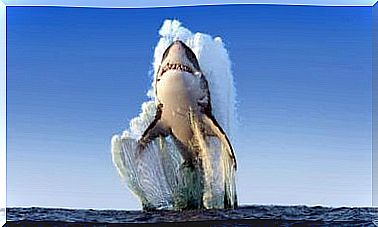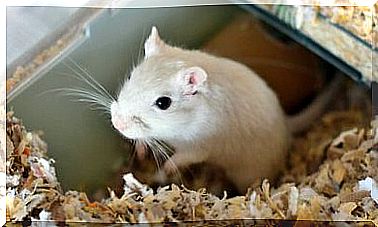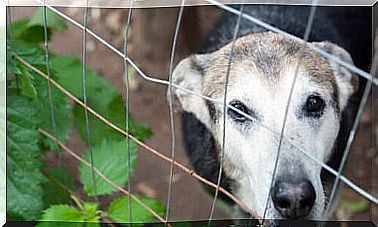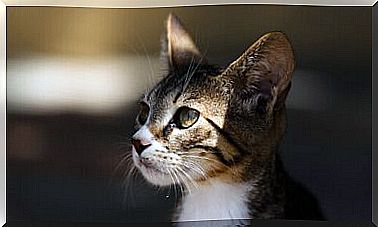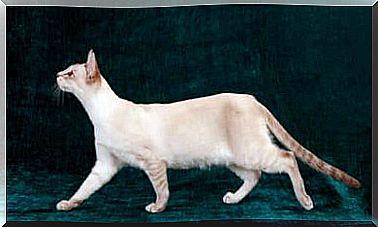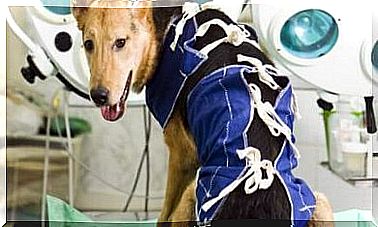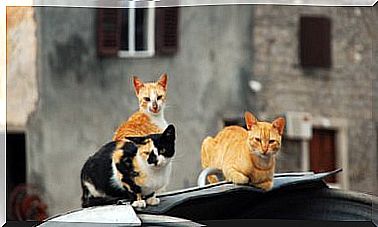Curiosities About The Bearded Vulture
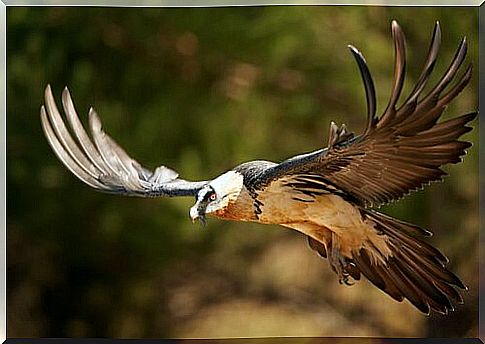
Among the four vulture species in Spain, there is one that stands out from the rest. Curiosities about the bearded vulture give this bird a special position within the group of birds of prey.
This curious bird is found in several European countries. Meanwhile, most of its population lives in three Spanish regions: the Pyrenees, the Sierra de Cazorla and the Picos de Europa, where the Foundation for the Conservation of the Bearded Vulture is reintroducing it.
Feeding the bearded vulture
The bearded vulture has one of the rarest diets in the animal kingdom. This animal drops the bones on the rock to break them.
The bearded vulture feeds mainly on bones. They are able to directly swallow the small pieces to feed on your marrow. However, the larger bones must be broken so they are thrown on rocks.
Its scientific name, Gypaetus barbatus , means “bearded vulture eagle”, due to the dense plumage of its chest and the species of black beard it has.
Its scientific name seems to indicate that this animal is halfway between vultures and other birds of prey: the eagles. After all, another curiosity about this species is that they are excellent flyers. As a result, they spend much more time flying than most other bird species.
Also, it doesn’t depend as much on thermal currents to rise. Thus, it is more common to see him making more common descents and maneuvers of eagles.
Another curiosity is that these birds are especially aggressive and very adept at attacking in the air. Therefore, it is not uncommon for them to steal prey or attack other birds that enter their territory.
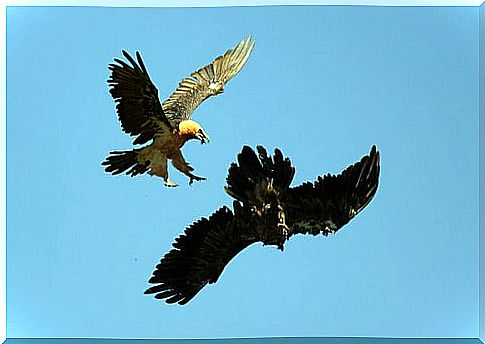
The bearded vulture devotes much of its time to raising its young.
Bearded vultures are animals that spend a lot of time raising their young. From the moment they are born to the end of the creation process, it can take a year. After that, we must add the time needed to emancipate the puppies, which can be one or two years.
Each pair of vultures has a territory with several nests that are placed in caves in the mountain walls. There is a rotation of these nests that allows the animals to keep each nest sanitized.
The territory in which these nests are located belongs only to that couple or to curious formations of two males and a female. These birds of prey do not live in large groups, unlike the other types of vultures you might see on a midden. Its strange diet means that a territory cannot accommodate hundreds of individuals.
Speaking of the midden, that is, the feast of the carrion of the vultures: the bearded vulture is the last bird to appear, since the griffon vultures, the black vultures and the Egyptian vulture will leave the bones at your disposal, already who cannot feed on them.

Why do these birds have their orange color?
Possibly one of the biggest curiosities about the bearded vulture is its appearance: its black coat with a goatee and its piercing eyes are especially notable. In addition, of course, to its silhouette, which resembles that of a much larger Egyptian vulture.
However, the most impressive part of their appearance is the piercing orange color of older animals. Young bearded vultures are nearly black and, as adults, have white breast plumage.
As they age, many of these animals have an orange color in their fur. This is because the bearded vulture has a unique behavior: it bathes in reddish waters containing limestone or iron, in order to obtain its orange color.
The purpose of this behavior is not known. After all, it doesn’t seem like a predator of that size needs to camouflage itself, so this function can be practically discarded.
Another possibility is that this behavior allows eliminating parasites. However, some recent studies have shown that water with iron oxide does not have greater properties against the parasites that affect this animal.
What is certain is that it has been observed that the oldest animals, and especially females, are the ones that are more orange. Therefore, it is believed that this coloration may be related to status and reproduction.
The function remains somewhat mysterious, as these animals have rarely been observed to perform this behavior.
It has been seen that bearded vultures only have a preference for red, which is also present in their eyes. Therefore, the intention may be to reinforce this color for dominance reasons.
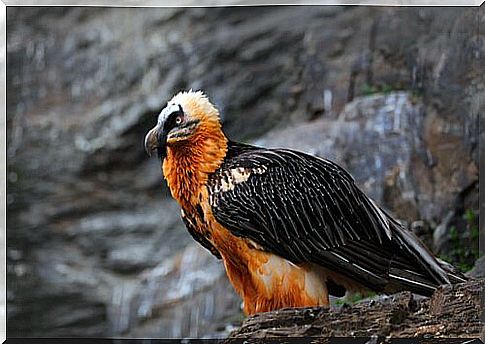
The Greek Killer: Another Curiosity About the Bearded Vulture
Another interesting thing about the bearded vulture is how this animal ended the life of Aeschylus, considered one of the founders of the Greek tragedy that lived more than 2,500 years ago.
Aeschylus, worried about his future, went to the Delphic oracle to know his destiny. The oracle’s prophecy said that he would die crushed by a house. So, according to the story, he would have moved out of town.
However, the prophecy was fulfilled in the most ironic way: a bearded vulture, interested in breaking the shell of a turtle, threw it on the slopes where Aeschylus lived. The Greek writer’s fate was so plotted that the animal struck his head, causing his death.
As we can see, the bearded vulture is a bird between myth and reality that impressed the human being for its unique behaviors. However, it is seriously threatened with extinction.
Although its populations have increased, it is a bird threatened by poisons and that depends entirely on extensive cattle raising. It is likely that now that many wild ungulates have moved from the mountain, the disappearance of the last farmers will not allow for their recovery.
Therefore, many conservation projects are focusing on protecting livestock to protect, in turn, the bearded vulture. In certain areas of the Pyrenees, restaurants and shops sell friendly meat for the bearded vulture. Thus, they promote a better diet for the environment and benefit farmers, who leave the corpses for this bird to feed, to complete the cycle.
